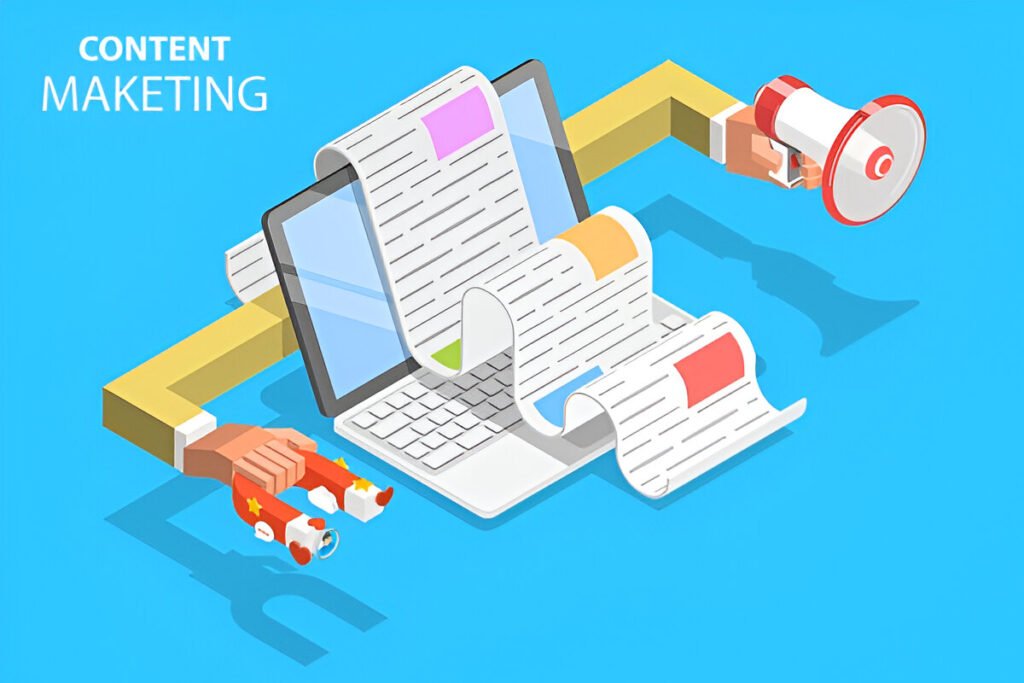How to Introduce Yourself When Doing an Outbound Marketing Campaign

In outbound marketing campaigns, your introduction determines whether prospects engage or disengage. Whether through cold email, cold calling, direct mail, or social outreach, those initial seconds when introducing yourself and your company are decisive. This guide focuses on crafting introductions that open doors rather than close them.
Core Principles for Effective Outbound Introductions
1. Research-Based Personalization
Generic introductions signal mass outreach and trigger immediate resistance. Effective introductions demonstrate that you’ve done your homework:
- Individual-Level Research: Reference recent professional achievements, published content, or career milestones
- Company-Level Research: Mention specific initiatives, changes, or challenges the prospect’s organization is facing
- Industry-Level Research: Acknowledge relevant trends or challenges affecting their sector
Example: “I noticed your recent LinkedIn article about supply chain resilience, which aligns with the challenges we’re seeing many manufacturing leaders face since the pandemic.”
2. Value-First Approach
Lead with what the prospect stands to gain, not what you’re selling. Your introduction should immediately establish potential value:
- Focus on outcomes rather than features
- Address a specific pain point or opportunity
- Quantify benefits when possible
Example: “I’m reaching out because we’ve helped three other mid-sized accounting firms in Boston reduce client onboarding time by 40% while improving compliance accuracy.”
3. Credibility Establishment
Quickly establish why the prospect should trust you through concise credibility markers:
- Relevant experience in their industry
- Notable clients similar to their organization
- Specific results achieved for comparable businesses
- Recognition or authority in your domain
4. Brevity and Clarity
Respect the prospect’s time with an introduction that gets to the point quickly:
- Limit initial introductions to 2-3 sentences
- Use simple, jargon-free language
- Make every word count
Example: “I’m Alex Chen from DataSight Analytics. We help e-commerce businesses like yours increase repeat purchase rates through predictive customer behavior analysis.”
Channel-Specific Introduction Strategies

Cold Email Introductions
Email introductions must survive the three-second scan that determines whether your message is read or deleted:
- Subject Line Connection: Ensure your introduction extends logically from your subject line
- Preview Text Awareness: Craft the opening sentence, knowing it may appear in preview text
- Visual Formatting: Use short paragraphs and strategic bolding to highlight key points
- Immediate Relevance: Establish a connection to the recipient’s role or challenges in the first line
Example Email Introduction:
Subject: Your Q2 Expansion Plans + Recruitment Efficiency
Hi Jordan,
Your recent announcement about expanding into the Seattle market caught my attention, as scaling teams quickly while maintaining culture has been a challenge for similar companies.
I’m Taylor James from TalentSphere, where we’ve helped tech companies like [Similar Company] reduce time-to-hire by 37% during rapid expansion phases…
Cold Call Introductions
Phone introductions must quickly overcome the interruption factor:
- Pattern Interruption: Start with something unexpected that differentiates from typical cold calls
- Permission-Based Approach: Acknowledge the interruption and request a small time commitment
- Voice Modulation: Use a conversational tone with strategic pauses
- Question Incorporation: Include a relevant question that invites engagement
Example Call Introduction:
“Hi Lisa, this is Michael from GrowthMetrics. I realize I’m interrupting your day [pause]. If you can spare just 30 seconds, I’d like to share how we helped three other manufacturing executives like yourself address the materials pricing volatility you mentioned in your industry panel last month. Does that sound relevant to your current challenges?”
LinkedIn/Social Outreach
Social platform introductions require recognition of the semi-personal nature of these channels:
- Connection Acknowledgment: Recognize any shared connections or groups
- Content Engagement: Reference their content you’ve genuinely engaged with
- Professional Admiration: Mention specific aspects of their work you respect
- Community Context: Position yourself within shared professional communities
Example LinkedIn Introduction:
“Hi Priya, I noticed your insightful comments in the Healthcare Innovation Group about interoperability challenges. Your perspective on patient data ownership particularly resonated with me. I’m Robin from MedDataSolutions, where we’ve been developing approaches that address exactly the consent management issues you highlighted…”
Direct Mail Introductions
Physical mail introductions can leverage the tangible differentiation factor:
- Visual Distinction: Ensure the introduction stands out visually on the page
- Personal Touches: Include genuine handwritten elements when feasible
- Physical Connection: Reference the physical nature of the communication
- Follow-up Mention: Indicate how and when you’ll next reach out
Example Direct Mail Introduction:
[Handwritten greeting]
As someone leading sustainability initiatives at [Company], I thought you might appreciate these biodegradable seed cards more than another digital message in your inbox.
I’m Chris Walker, helping manufacturing companies like yours implement zero-waste processes that reduce costs while meeting increasing regulatory requirements…
Context-Adapted Introduction Frameworks
For Decision-Makers
When targeting C-suite or other decision-makers:
- Acknowledge their strategic priorities
- Demonstrate business outcome focus
- Present relevant peer validation
- Respect extreme time constraints
Example: “Sarah, as someone overseeing rapid international expansion at [Company], you’re likely focused on maintaining a consistent customer experience across markets. I’m reaching out because we’ve helped three other enterprise SaaS companies achieve this while reducing localization costs by 30%.”
For Technical Evaluators
When approaching technical stakeholders:
- Show understanding of technical challenges
- Demonstrate relevant technical expertise
- Address integration or implementation concerns
- Use appropriate technical language
Example: “As someone managing cloud infrastructure transition, you’ve likely encountered the compliance documentation challenges that arise with multi-cloud environments. I’m Alex from ComplianceStack, where we’ve developed automation that reduced documentation overhead by 60% for companies with similar architectures.”
For Industry-Specific Prospects
When targeting specific industries:
- Use industry-appropriate terminology
- Reference industry-specific regulations or trends
- Acknowledge unique industry challenges
- Demonstrate specific industry experience
Example: “As a community bank navigating the latest CECL requirements, you’re balancing compliance demands with maintaining competitive lending practices. I’m Jordan from FinRegTech, where we’ve helped regional banks like yours implement solutions that satisfy regulators while preserving your relationship-based approach.”
Testing and Optimization
Effective introduction approaches should be continuously refined:
- A/B Testing: Create variation pairs, testing different introduction approaches
- Response Tracking: Monitor which introductions generate higher engagement
- Feedback Collection: Ask prospects which aspects of your introduction resonated
- Iteration Cycles: Implement regular review and refinement of approaches
Common Introduction Mistakes to Avoid
- Excessive Focus on Yourself: Leading with company history or personal accomplishments
- Feature Dumping: Listing product capabilities before establishing relevance
- False Personalization: Using obvious templates with superficial customization
- Artificial Urgency: Creating false time pressure that damages credibility
- Over-Familiarity: Assuming a relationship level that doesn’t exist
Conclusion
The introduction phase of outbound marketing campaigns establishes whether you’re perceived as a valuable potential partner or just another interruption. By combining genuine research, personalization, and value-focused messaging, you transform cold outreach into the beginning of productive business relationships.
Remember that effective introductions don’t attempt to close a sale—they aim to earn enough interest and trust for a conversation to begin. Focus on creating that opening by demonstrating relevance, respect for the prospect’s time, and a clear indication of potential value.
learn more: Can You Use Both Inbound and Outbound Marketing?





